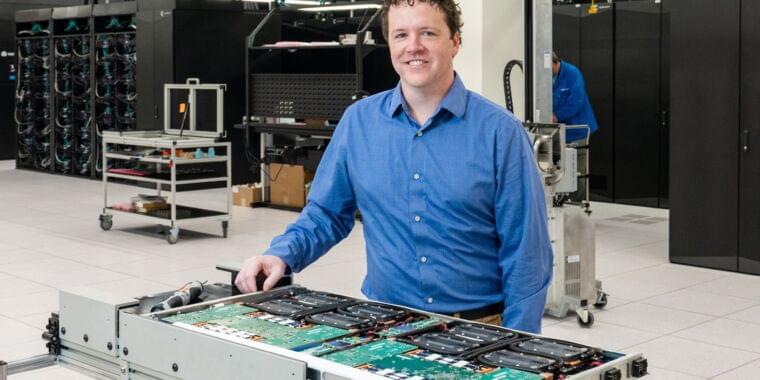
Get the latest international news and world events from around the world.


Sophisticated models provide a roadmap for Southern Africa’s clean energy future
The economy of Southern Africa is rapidly developing, driving a growing demand for electricity. Efficiently meeting this demand will require balancing social, economic, geographic, technological and environmental considerations.
Researchers at UC Santa Barbara led an international team that analyzed the region’s resources and power grid. Using this data, they developed an energy portfolio that most effectively meets Southern Africa’s 2040 energy requirements, finding that wind and solar are the region’s most cost-effective options. What’s more, their model’s proposal effectively freezes greenhouse gas emissions at 2020 levels while doubling the amount of electricity the grid can produce. A detailed analysis appears in the journal Joule.
Currently, Southern Africa’s 315 million people use about 275 terawatt hours, roughly the same amount as California. “However, Southern Africa is expected to double its electricity demand by 2040,” said co-lead and corresponding author Ranjit Deshmukh, an assistant professor in UCSB’s Environmental Studies Program. “Developing the region’s excellent wind, solar and natural gas resources is the least expensive option for its consumers, and can meet this demand without increasing the region’s electricity sector carbon emissions.”

1.1 quintillion operations per second: US has world’s fastest supercomputer
The US has retaken the top spot in the world supercomputer rankings with the exascale Frontier system at Oak Ridge National Laboratory (ORNL) in Tennessee.
The Frontier system’s score of 1.102 exaflop/s makes it “the most powerful supercomputer to ever exist” and “the first true exascale machine,” the Top 500 project said Monday in the announcement of its latest rankings. Exaflop/s (or exaflops) is short for 1 quintillion floating-point operations per second.
Frontier was more than twice as fast as a Japanese system that placed second in the rankings, which are based on the LINPACK benchmark that measures the “performance of a dedicated system for solving a dense system of linear equations.”


Soap molecule could help make alternative LED tech commercially viable
Adding a molecule normally used in detergent to an infrared LED could make devices that are easier to manufacture, require less energy and display richer colours than existing ones.
Solar cells and LEDs made from perovskite, a titanium and calcium crystal, have long held promise as being more efficient and easier to produce than commonly used silicon-based devices, but making them both stable and efficient enough to rival silicon’s commercial success has proved difficult.
What gives humans the advantage over our incoming robot masters? Junaid Mubeen at New Scientist Live this October.
Digital security dialogue: Leveraging human verification to educate people about online safety
Online safety and ethics are serious issues and can adversely affect less experienced users. Researchers have built upon familiar human verification techniques to add an element of discrete learning into the process. This way users can learn about online safety and ethics issues while simultaneously verifying they are human. Trials show that users responded positively to the experience and felt they gained something from these microlearning sessions.
The internet is an integral part of modern living, for work, leisure, shopping, keeping touch with people, and more. It’s hard to imagine that anyone could live in an affluent country, such as Japan, and not use the internet relatively often. Yet despite its ubiquity, the internet is far from risk-free. Issues of safety and security are of great concern, especially for those with less exposure to such things. So a team of researchers from the University of Tokyo including Associate Professor Koji Yatani of the Department for Electrical Engineering and Information Systems set out to help.
Surveys of internet users in Japan suggest that a vast majority have not had much opportunity to learn about ways in which they can stay safe and secure online. But it seems unreasonable to expect this same majority to intentionally seek out the kind of information they would need to educate themselves. To address this, Yatani and his team thought they could instead introduce educational materials about online safety and ethics into a typical user’s daily internet experience. They chose to take advantage of something that many users will come across often during their usual online activities: human verification.
This lab-grown cooking oil could replace vegetable oil
The challenge: Just 100 years ago, vegetable oils were practically nonexistent in the human diet. Today, they’re a major part of it: 740 million acres — an area that would cover 90% of India — are dedicated to growing soybeans, palm trees, and other oilseed crops.
While these cooking oils can make food extra tasty, oilseed crop production releases greenhouse gasses, contributes to biodiversity loss, and consumes freshwater that could otherwise be used for drinking or to grow other food.
Cultured oil: Instead of dedicating land and other farming resources to oilseed crops, alt-food startup Zero Acre Farms wants us to start using a cultured oil it produces through fermentation.


Transient microelectromechanical systems that can self-dissolve over time
Typically, the key goal of electronics engineers is to develop components and devices that are durable and can operate for long periods of time without being damaged. Such devices require resistant materials, which ultimately contribute to the accumulation of electronic waste on our planet.
Researchers at Northwestern University and the University of Illinois have been conducting research focusing on an entirely different type of electromechanical system (MEMS): those based on so-called “transient materials.” Transient materials are materials that can dissolve, resorb, disintegrate or physically disappear in other ways at programmed and specific times.
Their most recent paper, published in Nature Electronics, introduces new MEMS based on fully water-soluble materials that could dissolve in their surrounding environment after set periods of time. In the future, these materials could help to decrease the amount of electronic waste, enabling the development of some electronic devices that spontaneously disappear when they are no longer needed.
Artificial finger able to identify surface material with 90% accuracy
A team of researchers at the Chinese Academy of Sciences, has developed an artificial finger that was able to identify certain surface materials with 90% accuracy. In their paper published in the journal Science Advances, the group describes how they used triboelectric sensors to give their test finger an ability to gain a sense of touch.
Prior research has led to the development of robotic fingers that have the ability to recognize certain attributes of certain surfaces, such as pressure or temperature—the team with this new effort, have taken such efforts further by adding the ability to identify a material that is being touched.
The finger was created by applying small square sensors to the tip of a finger-shaped object. Each of the squares was made of a different kind of plastic polymer, each chosen because of their unique electrical properties. When such sensors are moved close to an object, such as a flat surface, electrons from the sensors interact with the materials in unique ways.